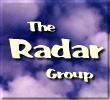











Last update
31 Jul 2008

This page is maintained by
Mark Fielding
All content Copyright © The University of Reading unless otherwise stated.
 Current Projects
Current Projects
Retrieval Algorithms for EarthCARE
An ESA-funded project to develop and validate cloud retrieval
algorithms for the proposed ESA/NASDA spaceborne cloud radar and
lidar.
Julien Delanoe, Robin Hogan.
APPRAISE-CLOUDS
A NERC project to study the effect of aerosols on mixed-phase clouds. An initial set of flights over Chilbolton was carried out in Dec 07/Jan 08 and a second set are scheduled for winter 08/09, with ground based radar, lidar and aerosol observations at Chilbolton in tandem with in-situ sampling by the FAAM 146 aircraft.
Chris Westbrook, Anthony Illingworth, Robin Hogan.
CloudNET
An EU-funded project involving remote-sensing sites at Chilbolton,
Paris and Cabauw (in the Netherlands) to develop remote sensing
techniques for the evaluation of models and to demonstrate the
importance of an operational network of cloud remote sensing
stations. See the recent paper in BAMS for more details PDF, or contact:
Ewan O'Connor, Robin Hogan, Anthony Illingworth
Properties of ice and supercooled clouds from polarimetric radar/lidar observations
A NERC project to study the production of ice particles in supercooled liquid layers using a 35GHz radar and depolarisation lidar pointing at 45 degrees. The ZDR signatures give information regarding the shape of the crystals, as does the lidar depolarisation ratio; the backscatters give information on their sizes and concentrations.Chris Westbrook, Anthony Illingworth, Robin Hogan.
Estimates of liquid water content using radar attenuation from space
The liquid water content of stratocumulus clouds is hard to measure using radar, since the reflectivity is typically dominated by any drizzle drops present. This technique uses the attenuation of the sea surface return below the cloud to infer LWC, and derive global statistics using CloudSat.Lee Smith, Anthony Illingworth.
Polarimetric radar observations
Use of operational polarisation radar measurements to derive rainfall.Rob Thompson, Anthony Illingworth.
Refractivity studies
Work to use measurements of refractivity from the Met Office's C-band radars and use this to infer humidity fields with a view to assimilation.Jon Nicol, Kim Bartholemew, Anthony Illingworth.
 Completed Projects
Completed Projects
Clouds, Water Vapour and Climate (CWVC)
Flights of the UK Met Office C-130 aircraft over Chilbolton to study the small-scale structure of warm fronts, particularly embedded convection and regions of supercooled liquid water. The project is funded under CWVC, a thematic program of NERC.
Polarimetric Radar Detection of Storm Electrification
A NASA-funded project to investigate the potential of polarimetric radar to detect lightning danger for aircraft and spacecraft launch vehicles. Strong electric fields can change the alignment of ice crystals which can be detected by the depolarisation and differential phase shift measurements of the 3-GHz radar.
Cloud Lidar And Radar Experiment (CLARE'98)
The ESTEC-funded CLARE'98 campaign took place at Chilbolton between 5 and 23 October 1998, with the aim of improving our understanding of cloud processes (particularly in mixed-phase clouds) and developing new remote retrieval algorithms. It involved five radars, four lidars, three aircraft and many other instruments.
Upper Troposphere/Lower Stratosphere (UTLS) Ozone
A NERC-funded thematic program to study the chemical, dynamical and radiative processes controlling the distribution of ozone in the upper troposphere and lower stratosphere at middle latitudes. Flights of the UK Meteorological Office C-130 aircraft have taken place over Chilbolton, with the aircraft making in situ chemical measurements that can be put in context using the dynamical information provided by the radar.
A subsidiary project under the UTLS umbrella is DCFZ (Dynamics & Chemistry of Frontal Zones), in which the effect of mixing associated with fronts on chemistry and dynamics are explored using the radar and aircraft.
Cloud Characteristics I & II
When the main 25 m antenna at Chilbolton is not scanning, the 94 GHz radar is left running continuously. Together with the lidar ceilometer at Chilbolton this provides a long dataset from which the statistical properties of clouds can be derived, as well as allowing for more detailed case studies. This work is funded by ESTEC.
See also...
 Quicklooks
from many of these experiments.
Quicklooks
from many of these experiments. Some of the research in progress using the data collected.
Some of the research in progress using the data collected. About the Chilbolton radars.
About the Chilbolton radars.